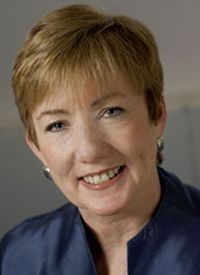Article
Expert Highlights Management of Locoregional Recurrence in Breast Cancer
Author(s):
Monica Morrow, MD, addresses how she treats patients with breast cancer who have locoregional recurrence and how therapeutic approaches have evolved over recent years.
Monica Morrow, MD

Monica Morrow, MD
The frequency of locoregional recurrence in breast cancer is decreasing over time, according to Monica Morrow, MD, due in part to improved patient selection for breast-conserving surgery. Moreover, key approaches to managing such recurrences have also been defined.
In the past, locoregional therapy was considered similar to metastatic disease, and while it still can have a poor prognosis in a small subset of patients, certain cases of locoregional recurrence can be considered curable, she explained.
“The face of locoregional recurrence has changed, because the surgery we do today is more conservative than the surgery that was done in the past,” said Morrow, who is chief of Breast Service at Memorial Sloan Kettering Cancer Center. “Some people have had a fairly nihilistic attitude towards locoregional recurrence—considering it to be the equivalent of metastatic disease. And while that is true of some early locoregional recurrences, where after adequate primary therapy they are associated with a poor prognosis, it’s not true in specific clinical scenarios—isolated axillary recurrence being one of them.”
OncLive: Can you discuss how often locoregional recurrence is seen in breast cancer?
In an interview with OncLive during the 20th Annual Lynn Sage Breast Cancer Symposium, Morrow addressed how she approaches patients with locoregional recurrence and how treatment has evolved over recent years.Morrow: Locoregional recurrence is something that has become progressively less frequent over time and the reasons for that are 2-fold. One is that, over time, we have gotten better at selecting patients for breast conserving surgery, understanding how much tissue we need to remove, and that we need to give radiation treatment. The other more important reason is that systemic therapy, which has now become widespread for patients with early-stage breast cancer, not only reduces the risk of dying of breast cancer, but it also reduces the risk of locoregional recurrence.
What are your recommended approaches for managing locoregional recurrence?
What has happened with locoregional recurrence over time is that it’s gone from 30% of all recurrences, to 15% of all recurrences. That is true, independent of patient menopausal status and whether they are treated with breast conserving surgery or mastectomy. That’s good news for our patients, but it makes it more difficult for us to study locoregional recurrence.The area of management of locoregional recurrence has really changed in terms of what we do with the axilla. Previously, almost all patients were treated with a modified radical mastectomy—meaning an axillary dissection, so axillary recurrence was very infrequent. Now, when sentinel node biopsy is the way we manage node-negative, and increasingly node-positive axilla, what to do with axillary recurrence has changed a bit. If you have someone who has a negative sentinel node biopsy, the likelihood of having a first isolated axillary recurrence is only about six-tenths of a percent. If you have someone who has 1 or 2 positive sentinel nodes treated without dissection, it’s about 1.1%. In those patients, it is important to exclude the presence of distant metastases before you do anything locally, then axillary dissection is the standard treatment because those patients still have potentially curable disease. This is because a significant number of them will not be true recurrences, but disease left behind from sentinel node biopsies.
The other thing we are seeing, because of the use of sentinel node biopsy, is in patients who recur locally in their breast or on the chest wall after mastectomy. The questions that come up are, “Should we restage the axilla? Can you do a repeat sentinel node biopsy, and does it make sense to do that? Does it influence therapy?” It turns out that the success of repeat sentinel node biopsy is highly correlated with the number of lymph nodes that were removed at the first operation. In about 80% of women who started out with a sentinel node biopsy, you can find a sentinel node the second time around. Although we don’t have great data on its predictive value, it does appear to accurately stage the axilla.
What data support this?
The important thing to understand in the altered axilla is that drainage pathways are different. About one-third of patients will actually drain to the contralateral axilla, which virtually never happens when you haven’t had surgery on the side of the cancer. Therefore, while technically contralateral axillary metastases are staged as distant metastatic or stage IV disease—in the setting of somebody who has had locoregional recurrence in their breast with previous axillary surgery—this again may be curable disease. It is important to exclude distant metastases, and exclude primary in the opposite breast with a mammogram and magnetic resonance imaging. If those things are negative, then those patients should be treated aggressively for cure.There have been several meta-analyses, but the data that support this comes from small studies with heterogenous populations. Indeed, meta-analyses have shown that by doing surgery on the opposite axilla in patients who do not have locally advanced recurrences, you end up with 5-year disease-free survival rates that range from 35 to 60%, depending on the stage of the original cancer and how many nodes are involved at the time of recurrence. This is far from level 1 data because these are rare events; there’s never going to be a randomized trial that addresses this. The situations are heterogeneous because it depends on the treatment the patient got for the first cancer, as well as the specific characteristics of the recurrence.









